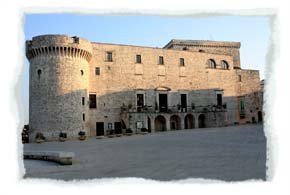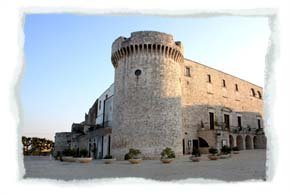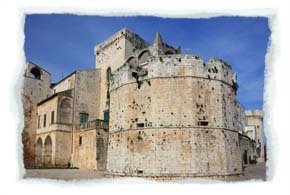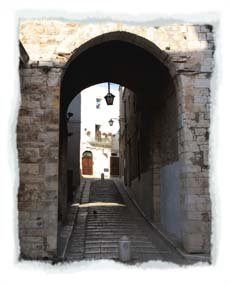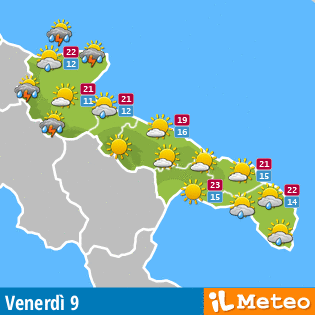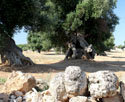Conversano
Info Conversano
-
Region:
Provincie:
Municipality:
CAP:
Area code:
Surface:
Population:
city hall:
-
Apulia
Bari
Conversano
70014
080
126,90 Kmq
25.860
Piazza XX Settembre 25
Conversano, a medieval village on the Murge
Conversano, with its little medieval suburb, lies on the first hills of the Murge; it was already peopled during the Prehistoric Age by Peuceti and Japigi and it is possible to find an evidence of their passage in the ruins of the megalithic walls surrounding the ancient Norba, which can be perfectly admired near the abbey of San Benedetto and at the base of the main tower of the castle. Its origins date back to the Iron Age, when according to most scholars the old settlement of Norba was founded; it was probably destroyed about 441 in consequence of the fall of the Western Roman Empire because of the Visigoti. In the 11th century Conversano became one very important county with properties all over the central and southern zone of Apulia. The first count was Goffredo d’Altavilla in 1054, who was the nephew of Roberto il Guiscardo duke of Apulia. The town is deeply linked with the noble family Aragona which has been feudatory of Conversano since the 15th century transforming it in an elegant Renaissance court devoted to arts and literature. The count Giulo Antonio and his son Andrea Matteo, distinguished themselves by fighting in 1481 in order to reconquer Otranto, which was besieged by Turks; their courage was repaid by Ferdinando I, king of Naples, who let them add the royal name Aragona to the family name Acquaviva.
The main symbol of the town is its imposing castle which stands in a commanding position dominating the whole area as far as the seaside. The structure has been reorganized many times during the centuries and it is characterized by some fortifications which date back to the medieval period; the castle then underwent subsequent Renaissance and Baroque modifications becoming an elegant residence. Evidences of the Norman fortification are the main tower and the medial tower whereas between the 14th and the 15th century some important extension works were realized such as the building of a circular tower at the northern corner. In 1460 the family Acquaviva built a dodecagonal tower: it is an engineering masterpiece because of a cistern, inside of it, around which there is a passage with drains for the defence of the city. In 1710 the present monumental entrance was built with the escutcheon of the noble family; through it we enter the inner courtyard and reach the Renaissance arcade. Many further modifications have been realized in the castle until the end of the 19th century.
In the 17th century the county and the city experienced a period of great prosperity thanks to the count Giangirolamo II known as the Guercio delle Puglie. Famous for his rash chivalrous temperament and known for having been also an important patron, the count Giangirolamo increased the artistic collection of the castle conferring fame and prestige to the family. The meeting with the Neapolitan painter Paolo Finoglio is notorious; he had been guest in Conversano for long time and he realized, for the court, the beautiful ten big paintings (teleri) inspired by Tasso’s Gerusalemme liberata, we can admire within the castle. The heart of the town is represented by the square said della conciliazione, on which the entrance of the Norman castle opens.
Almost in front of the castle we find the Cathedral, emblem of the Apulian Romanesque of the 11th – 12th century. The tripartite hut façade is decorated with three portals and the one in the middle is richly carved and surmounted by a protyrus resting on stylophoric lions; it is also worth mentioning the rose window which dates back to the 15th century. Inside the church shows a basilical plan with three naves and a large transept; at the beginning of the 20th century the church came back to the Romanesque style because of a terrible fire. It has been possible to save from the fire a precious icon which dates back to the 12th century and represents the Vergine della Fonte and, in the left apse, a beautiful 15th century fresco influenced by Tuscan art. Another symbol of the town is the monastery of San Benedetto, known as MONSTRUM APULIAE that is to say astonishment of Apulia. The first Benedictine settlement dates back to the 6th century; in 1098 the count Goffredo provided the monastery with many benefits and properties. In the 13th century the monks left the monastery in consequence of some disagreements with the king Manfredi, son of Federico II, and they were replaced by a women’s branch of the same order. Pope Gregorio X gave the Cistercian nuns the same rights acquired by their predecessors, even the two main episcopal insignia that is to say the mitre and the pastoral staff for the abbess, creating a unique and extraordinary situation in the Latin church.

